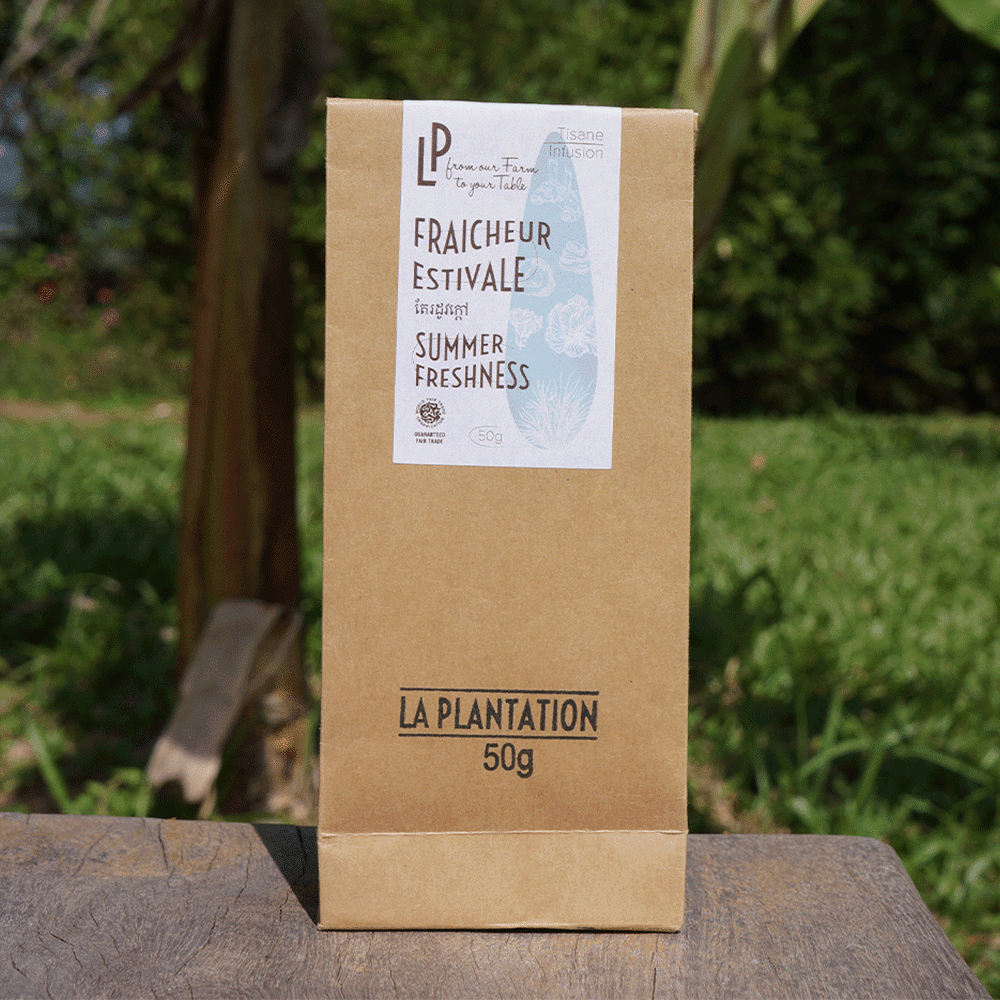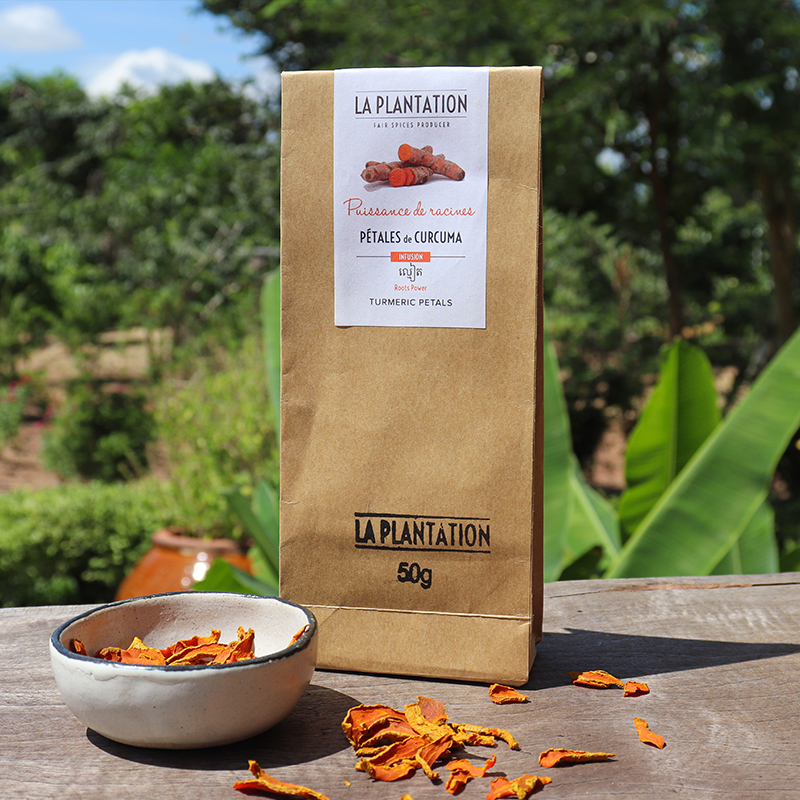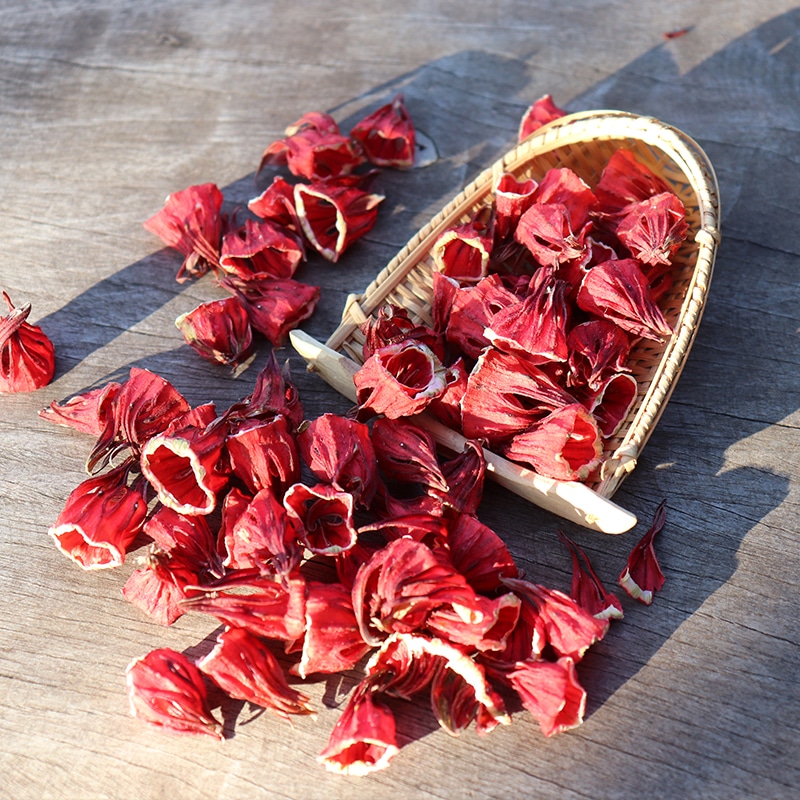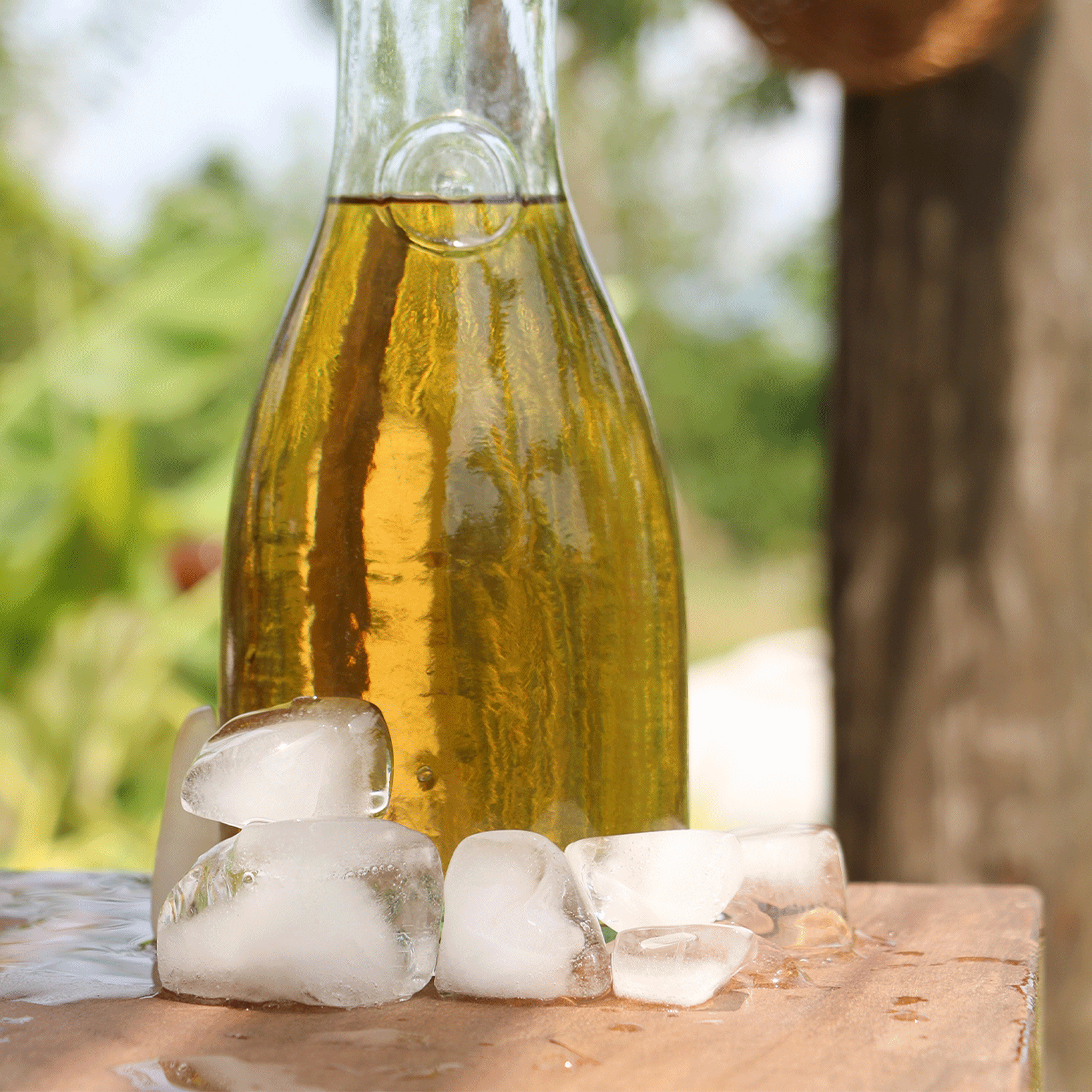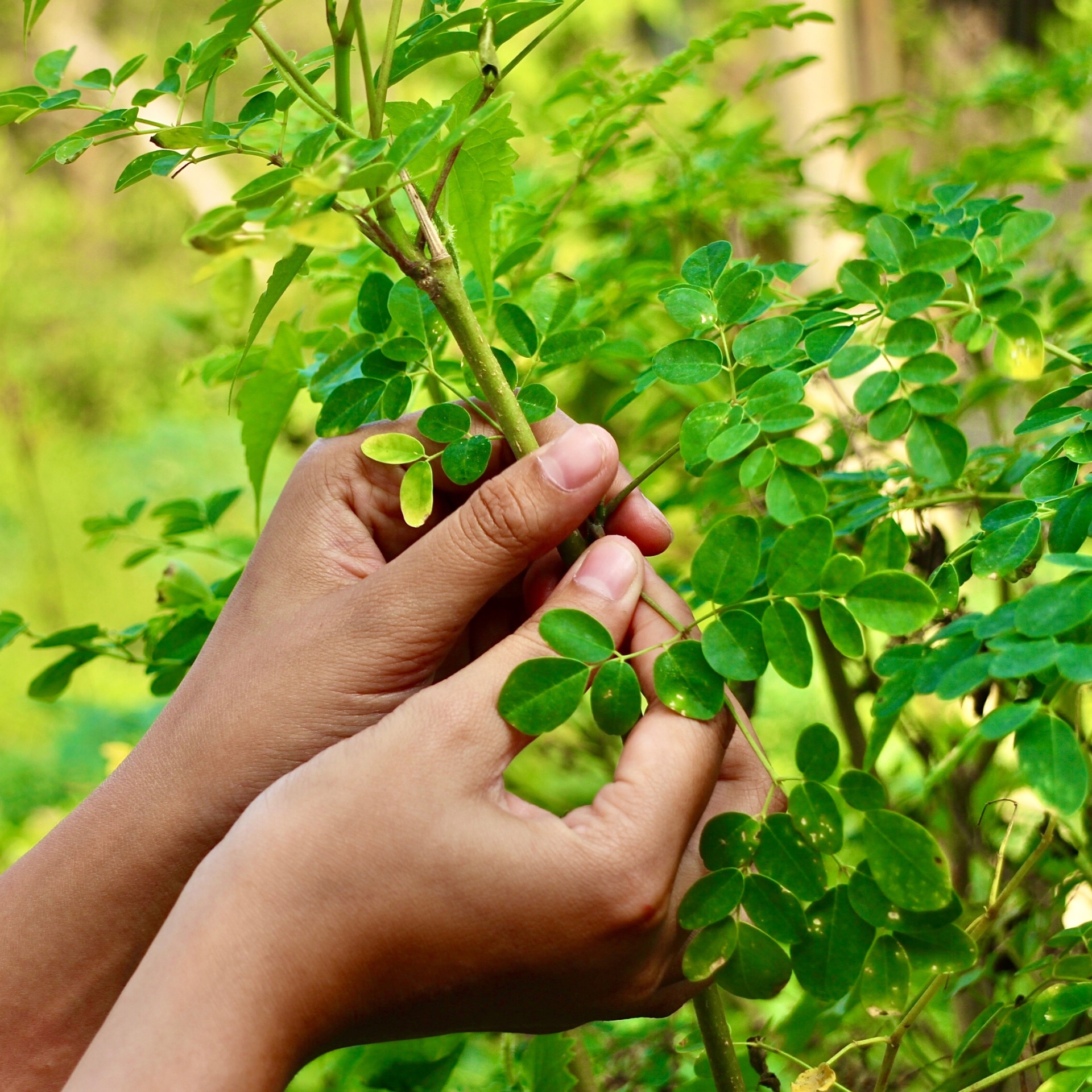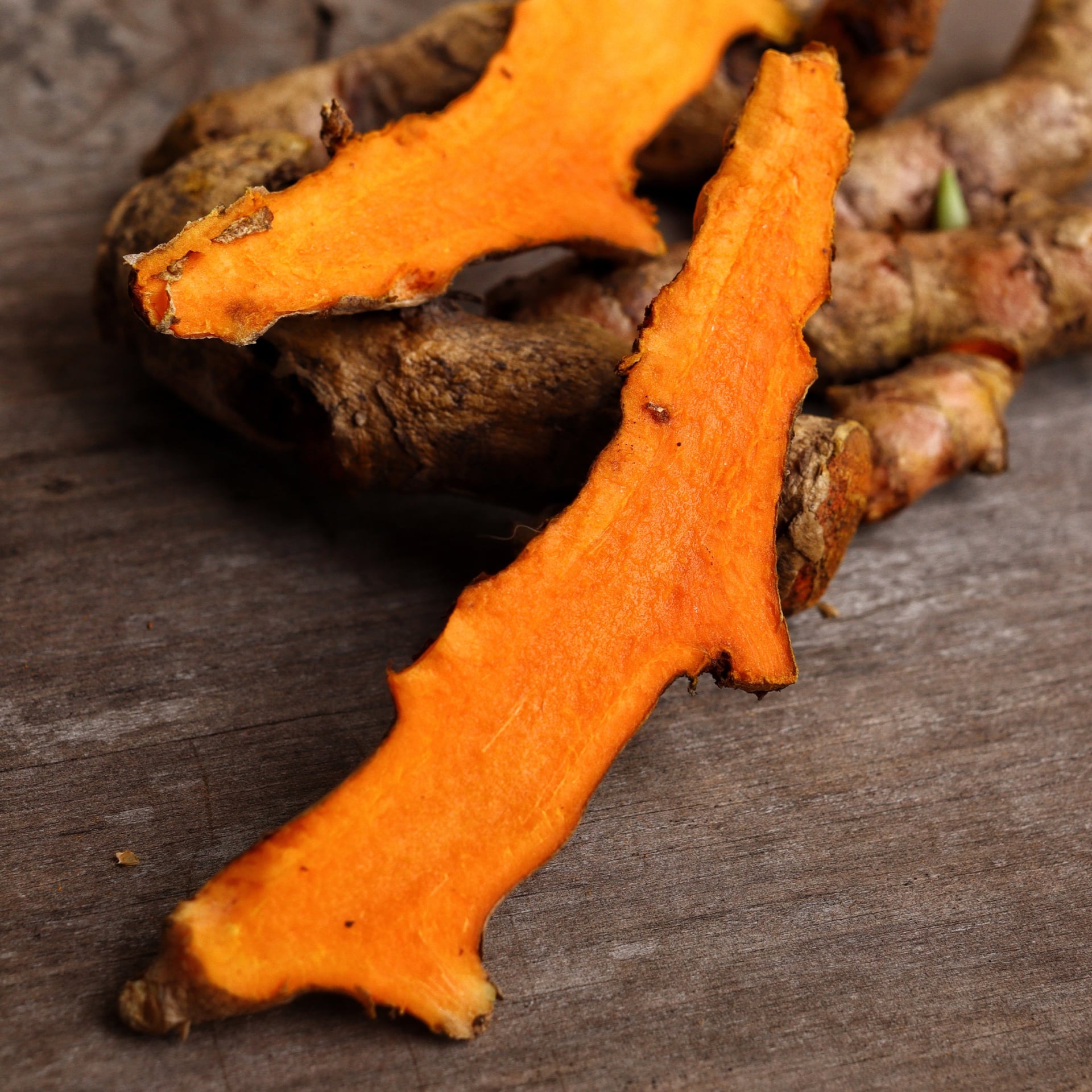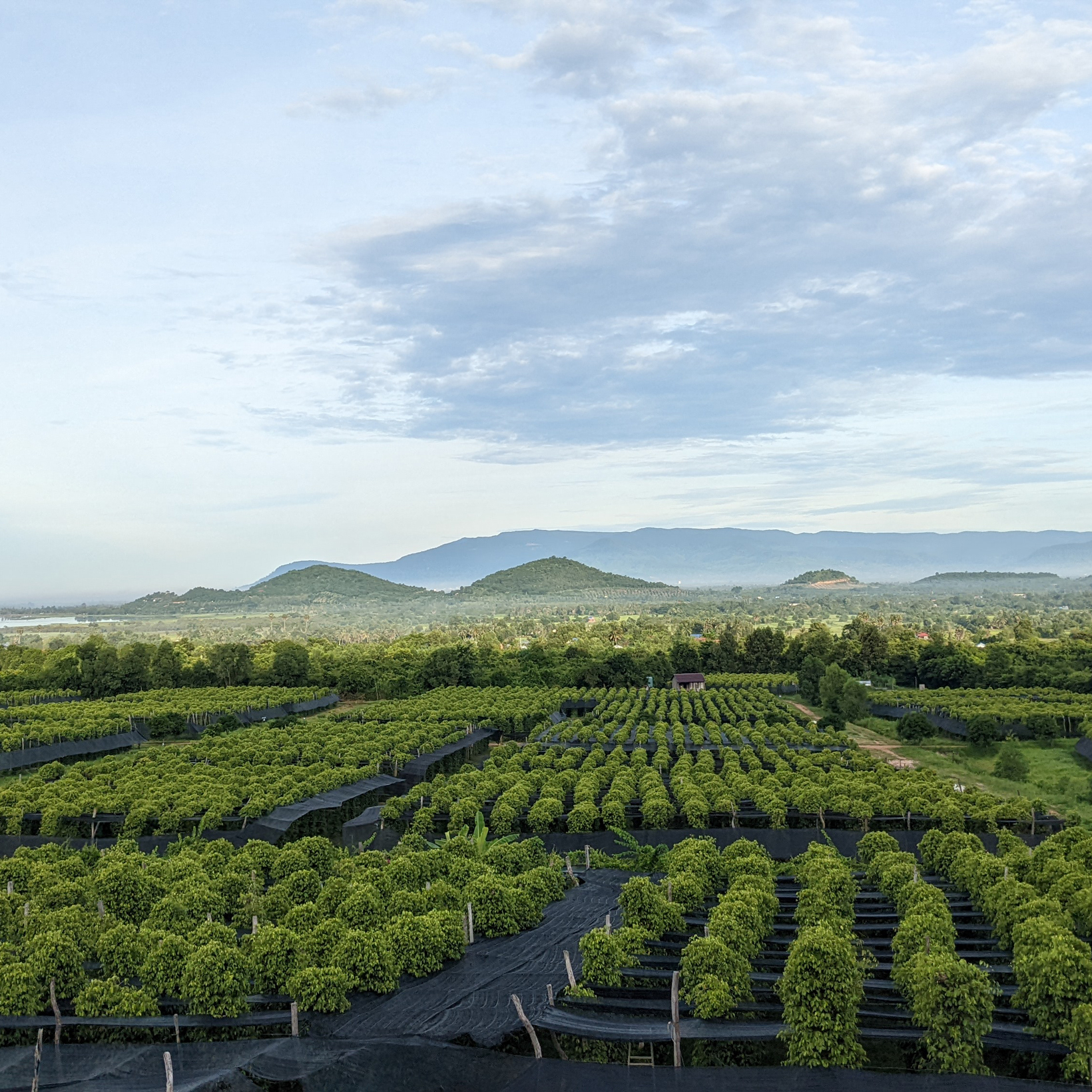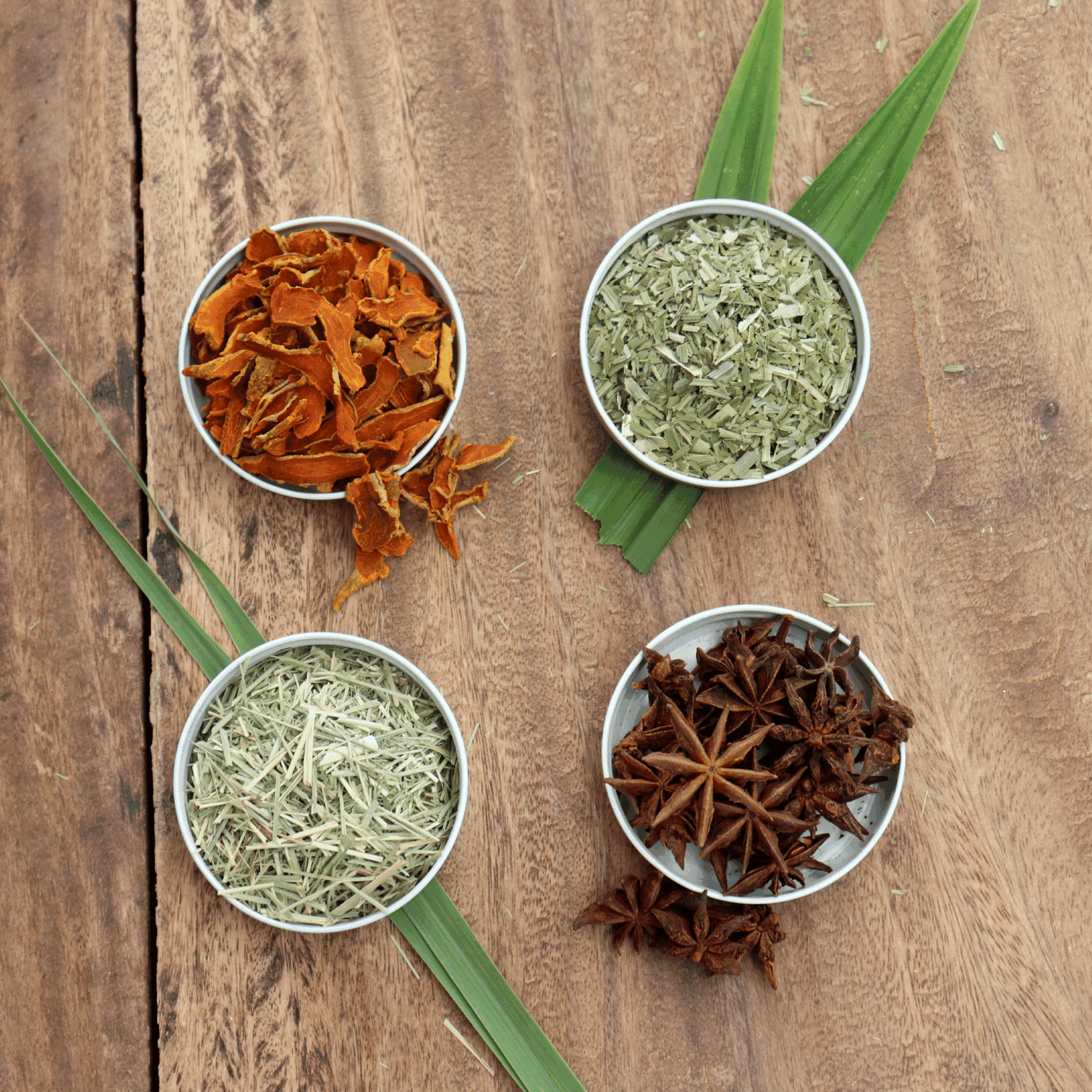
Allies for your health, herbal teas offer you their benefits
Sommaire
Herbal tea often brings back the memory of childhood or the image of a warm cup before bedtime. Yet behind this simple ritual lies a practice that goes back thousands of years, shaped by both European traditions and Asian knowledge.
Today, the popularity of spiced herbal teas is growing fast. People appreciate them for their variety of tastes and their gentle approach to well-being and balance.
In this article, you will discover:
-
The difference between herbal tea and infusion.
-
The potential benefits of herbal teas depending on the plants used.
-
The most essential spices to include in your recipes.
-
Practical tips for preparing a drink that is both flavourful and adapted to your needs.
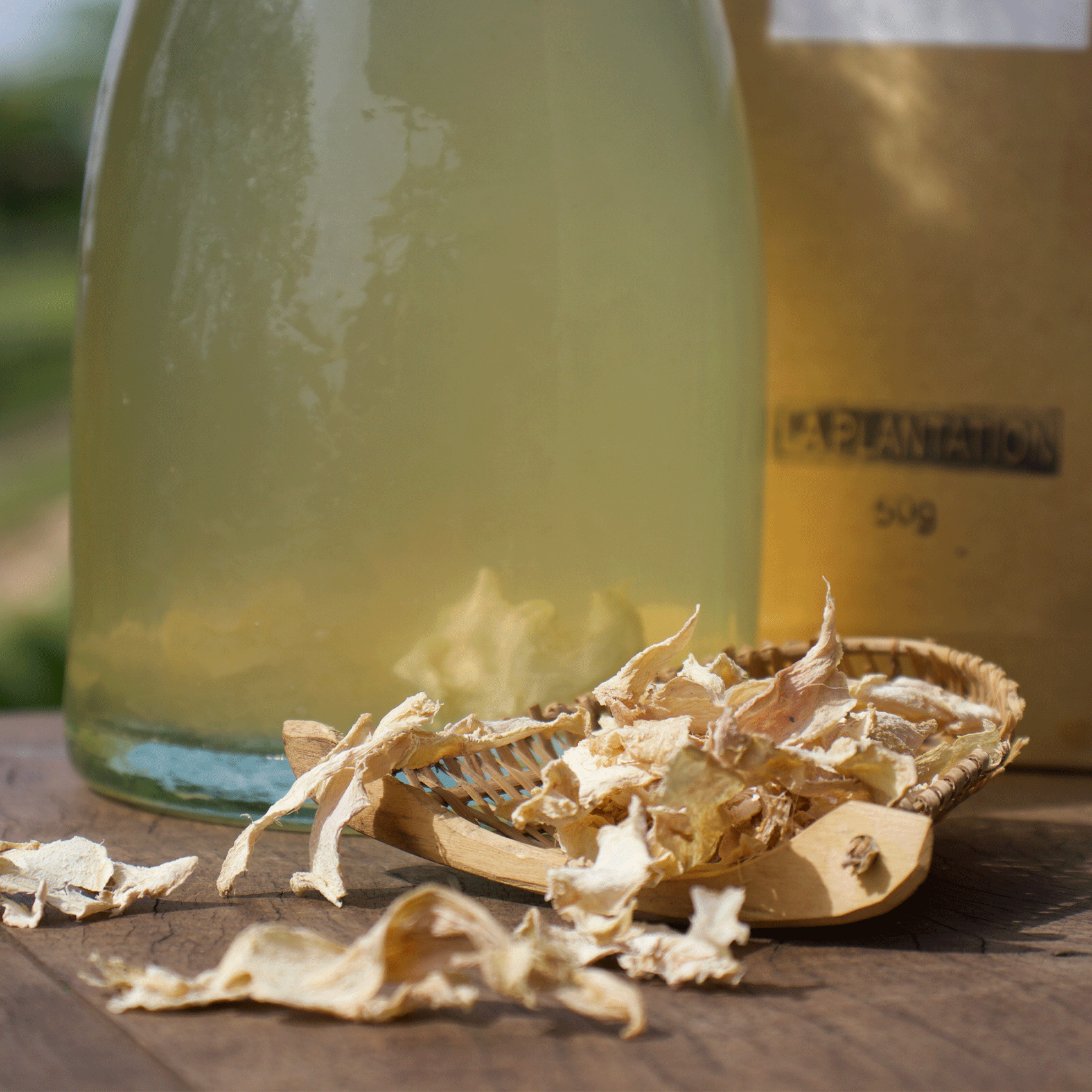
Understanding phytotherapy: herbal teas and infusions
What is phytotherapy?
Since the beginning of time, humans have turned to plants to soothe, strengthen, and restore balance. Phytotherapy is the art of using plants — leaves, flowers, roots, and seeds — to support daily well-being.
According to the World Health Organization (WHO), more than 80% of the global population still relies on medicinal plants as a primary source of care.
In Europe, phytotherapy is seen as a natural complement, not a replacement for medical treatment, but as a way to improve quality of life.
In Cambodia, the Khmer people have preserved an impressive knowledge of local herbs and roots. Passed down from generation to generation, this tradition helps maintain balance and vitality all year long. Inspired by this heritage, La Plantation has developed a range of herbal teas made from hand-harvested plants, carefully dried to keep their full flavour and properties.
Herbal tea is part of this tradition. It is not a miracle cure but a gentle and enjoyable way to add the benefits of plants to your daily routine.
What is the difference between herbal tea and infusion?
The terms herbal tea and infusion are often confused, but they are not the same.
-
Herbal tea is the drink itself, made by steeping plants (leaves, flowers, roots, or seeds) in hot water.
-
Infusion is the method: pouring hot water over the plants and letting them rest for a few minutes.
In other words, an infusion can be made with tea, coffee, or herbs, but a herbal tea is always an infusion made only with plants.
How to choose your plants and spices?
Choosing a good herbal tea is not only about taste or colour. The most important factors are quality and properties.
A good herbal tea comes from plants grown without pesticides or chemicals, then dried soon after harvest to preserve their aroma. Gentle drying at low temperatures helps maintain both flavour and natural compounds.
The choice also depends on the effects you are looking for:
- For digestion, popular plants include thyme, star anise, or ginger.
- For relaxation, chamomile and lavender are classic options.
- For energy and freshness, rosemary and lemongrass are perfect in the morning.
And of course, pleasure matters too. A herbal tea should be both effective and enjoyable. Lemongrass offers a refreshing citrus note, moringa’s health benefits (known as the “tree of life” in Ayurveda) is valued for its nutrients, while ginger brings a warm and spicy kick. Hibiscus adds a colourful and tangy touch, and star anise delivers its unique and recognisable fragrance.
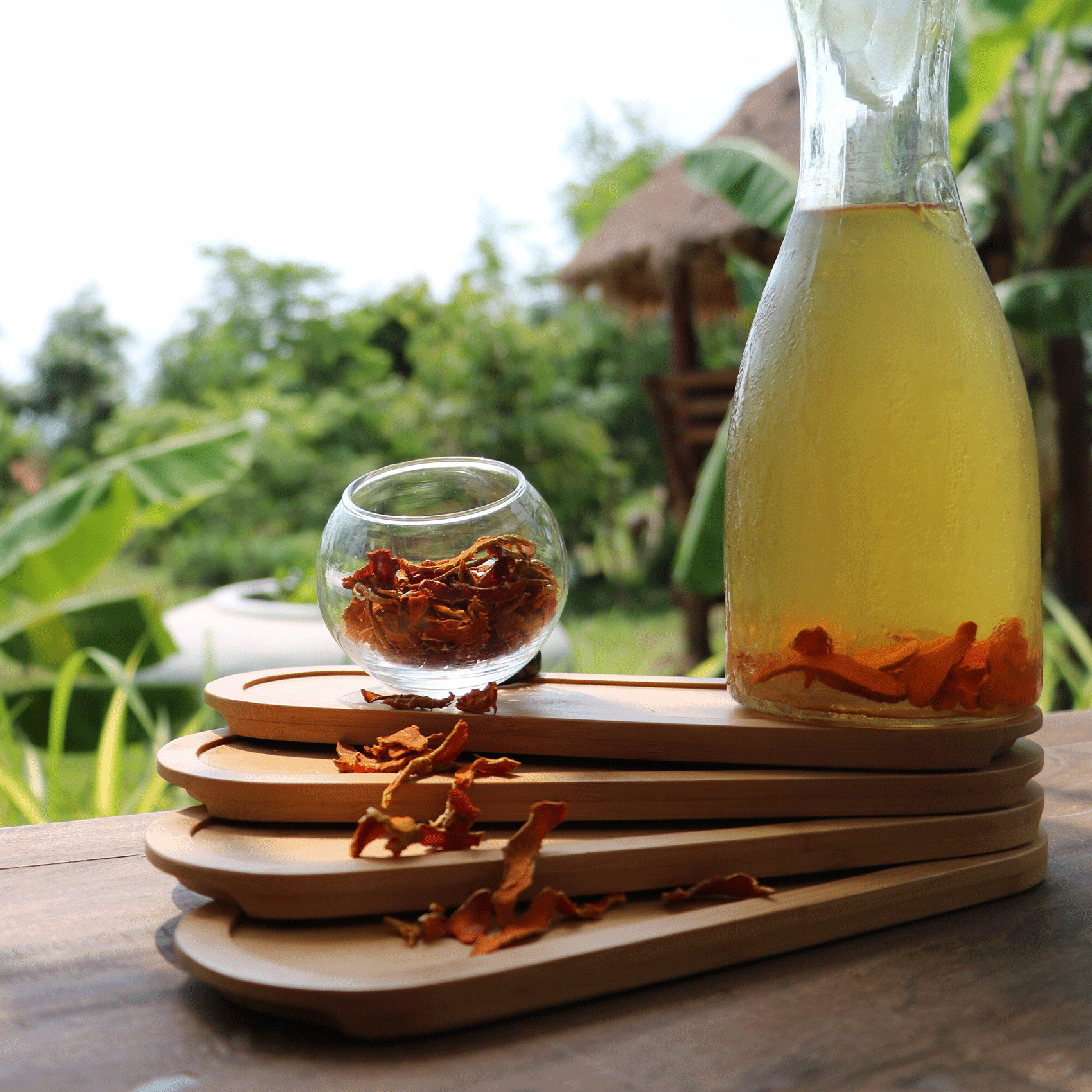
The benefits of herbal tea for health
According to European food regulations, it is not possible to officially claim medical or therapeutic effects for herbal teas. The information below is based on scientific research and traditional uses of plants and spices, and should be read with caution. Herbal teas are not a substitute for medical treatment and should always be enjoyed as part of a balanced lifestyle.
Herbal teas for sleep and stress relief
Herbal tea is often linked to better sleep and relaxation. The best-known plant is chamomile. Several studies, including one published in Phytomedicine (2016), suggest that chamomile may help improve sleep quality and reduce anxiety.
Other calming plants include verbena and star anise, both valued for their gentle and soothing effects.
A warm cup of herbal tea in the evening can become a simple relaxation ritual, helping the body and mind prepare for rest.
Herbal teas for digestion and comfort
Since antiquity, plants have been used to support digestion.
-
Rosemary is traditionally associated with digestive comfort, especially after heavy meals.
-
Lemongrass, with its citrus freshness, is often chosen to reduce bloating or heaviness.
-
Ginger is valued for its warming effect and is a common ingredient in digestive blends.
A review published in Herbal Infusions as a Valuable Functional Food (PMC, 2021) confirmed that some herbal teas may help relieve mild gastrointestinal discomfort.
Herbal teas to support natural defences
During times of fatigue or seasonal colds, herbal teas play a helpful role. They provide hydration, warmth, and comfort, while delivering antioxidant-rich compounds that may support the body’s natural defences.
In winter, herbal teas become a daily ally.
-
Thyme, rich in aromatic compounds, is traditionally used for respiratory comfort.
-
Moringa, called the “tree of life”, is naturally rich in vitamins and minerals.
-
Turmeric, long used in Asian medicine, is often linked to vitality and overall balance.
According to Harvard Health (2020), teas rich in polyphenols and antioxidants may help support the immune system.
Detox and cleansing herbal teas
Detox herbal teas are very popular today. Their main benefit comes from their hydrating and draining effect.
-
Hibiscus, with its tangy taste and vibrant red colour, is often consumed for natural drainage.
-
Lemongrass, alone or mixed with ginger and citrus, adds freshness and a light feeling of renewal.
A study in Role of Herbal Teas in Regulating Cellular Homeostasis and Health (PMC, 2021) highlighted that some infusions may contribute to cellular balance thanks to their antioxidant richness.
Precautions and safe use
Herbal tea is safe and pleasant when enjoyed in moderation. On average, two to three cups per day are enough to enjoy its flavour and potential benefits.
However, some plants may not be suitable:
-
during pregnancy or breastfeeding,
-
for young children,
-
or if you are under specific medical treatment.
In these cases, it is best to ask a healthcare professional before drinking herbal teas regularly.
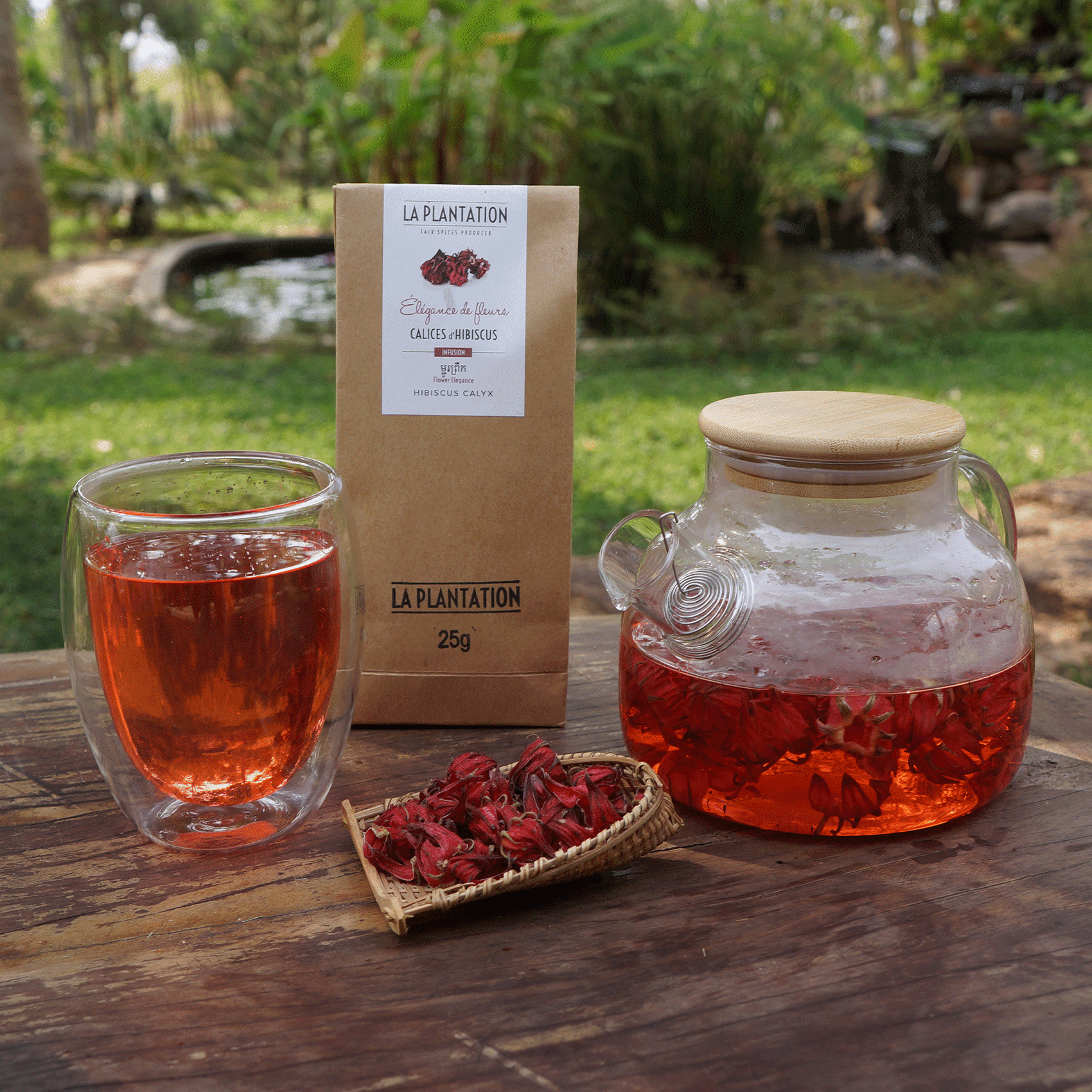
Practical guide to preparing herbal teas with spices
How to manage dosage and steeping time?
To prepare a good herbal tea, it is important to balance dosage and steeping time. A general rule is to use one tablespoon of dried petals or leaves per cup, then steep for about 10 minutes in hot water just below boiling.
Each plant has its own character: ginger can steep longer without losing flavour, while verbena or chamomile release their aromas quickly. Feel free to adjust the time and quantity to suit your personal taste.
Water temperature and infusion methods
-
Water temperature is key to a successful infusion.
-
If the water is too hot, delicate plants may burn and lose their aroma.
-
If the water is too cool, the flavours will not fully develop.
The ideal temperature for most herbal teas is around 90°C.
In summer, you can also try cold infusion. By steeping the plants in fresh water for several hours, you obtain a mild, refreshing drink full of flavour. This method works especially well with fruity blends and spices like lemongrass or ginger. However, denser plants like hibiscus need hot water to fully release their pigments and aromas.
Tips to enhance flavour
Mixing several spices creates a synergy of taste. Classic pairings include ginger and turmeric. Lemongrass softens earthy notes, while hibiscus adds freshness and acidity.
Cooking with herbal teas
Herbal tea is not only for drinking. It can also be used as an ingredient in cooking. An infusion can serve as a flavour base for sweet or savoury recipes.
A syrup made with ginger or turmeric petals, sweetened after infusion, is perfect for topping cheesecakes or desserts.
The same infusion can be used in cocktails: a gin and tonic with galangal or a spritz with hibiscus gains a surprising aromatic twist.
In savoury cooking, herbal teas can act as a light broth. Infused lemongrass or star anise can become a subtle base for fish, rice, or Asian-inspired soups.
Try our Ginger Broth recipe, where the root’s spicy strength meets delicate balance.
Single-plant teas or blends?
The choice depends on the experience you want:
Single-plant teas highlight the purity of one flavour, such as thyme for digestion, chamomile for relaxation, or ginger for warmth.
Blended teas offer a richer and more complex aromatic profile, combining several plants and spices to match different times of the day.
-
A blend of moringa, ginger, and turmeric (Morning Boost infusion) for energy.
-
A mix of lemongrass, hibiscus, and citrus (Tropical Delight infusion) for freshness in summer.
-
A recipe of soft flowers and warm spices to accompany long winter evenings.
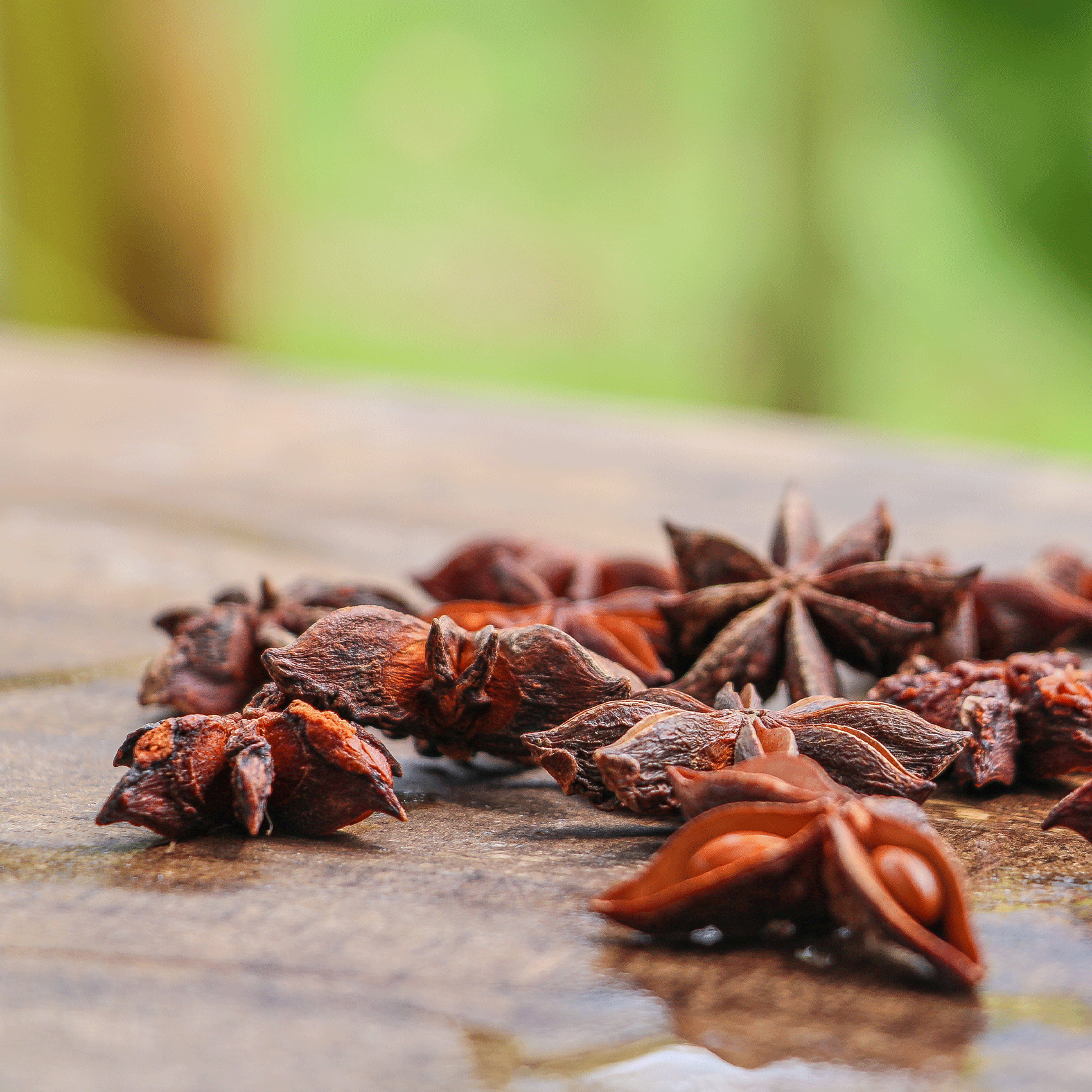
FAQ
What are the main benefits of herbal tea?
Herbal tea may support relaxation, digestion, and hydration, while offering natural flavours from plants and spices.
Which herbal tea is best for sleep?
Chamomile is the most popular herbal tea for sleep. Verbena and star anise are also known for their calming effects.
Is herbal tea better than green tea?
Green tea contains caffeine, while herbal teas are usually caffeine-free, making them gentler and suitable for evening use.
Can herbal tea be drunk every day?
Yes, most people can enjoy 2–3 cups daily. It is a safe and natural way to hydrate, as long as plants are chosen carefully.
What is the healthiest herbal tea to drink daily?
It depends on your needs. Chamomile is soothing, ginger is energising, hibiscus is refreshing, and moringa is nutrient-rich.
